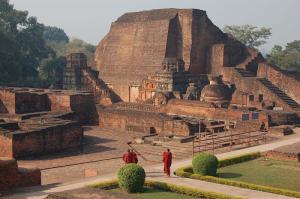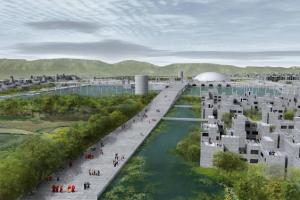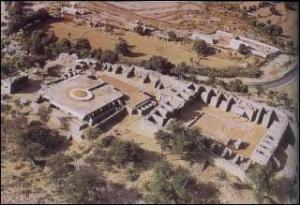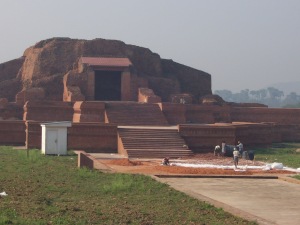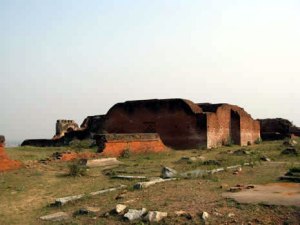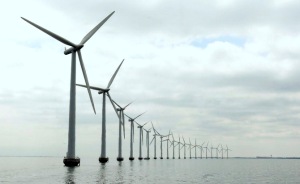There was an interesting news on Wednesday. It said that Uttar Pradesh Government, headed by a young Chief Minister Akhilesh Yadav, has given a Minister of State post to a Muslim cleric two days ago. Giving this post basically means that he was not democratically elected, but was specially appointed at the discretion of the Chief Minister.
Then we heard that there were protests by BJP against this move. Most casual observers would then move on to the next news item. What’s so special in a seemingly pro-Hindu BJP protesting against a secular Government giving Minister status to a Muslim Maulana? That’s probably the thought process of a typical Left liberal person in India. Hey, wait, there’s a lot more to this. Spare a few minutes.
This particular case involves a prominent Muslim cleric of Barelvi Sect, Mohammed Tauqeer Raza Khan. He’s now an adviser in Handloom Department – a Minister of State. Khan is the Itihaad-e-Millat Council president and belongs to Bareilly in Uttar Pradesh.
Why is this particular case so important to look deeper into?
It’s because, this is not just a simple vote bank political move, of giving Minister status to a Muslim cleric. For understanding this, you need to go a few steps back via flashbacks, in a typical Bollywood masala movie style.
Flashback 1: Mar 12, 2010
Hindu Muslim riots flare up again in Bareilly, after Tauqeer’s release.
A relatively peaceful city, for Uttar Pradesh’s communal tension standard, Bareilly, witnessed yet another round of riots after this Tauqeer Raza Khan was released by Mayawati Government. Khan was ordered to be released soon after all the charges, except a milder one under Section 144 of the Indian Penal Code, were removed by the Uttar Pradesh administration and he was allowed to walk free following immense pressure from the members of his community.
The important question here is, what was this ‘immense’ pressure from his community on Mayawati of BSP? Why did she yield? More importantly, why was he arrested in the first place?
Flashback 2: Mar 9, 2010
A Muslim cleric arrested for communal clash in Bareilly
Security was intensified in Uttar Pradesh’s Bareilly district following the arrest of a leading cleric for his alleged role in last week’s communal clash. Maulana Tauqeer Raza Khan, president of the Ittehad-e-Millat Council, was arrested. It was his “rabble rousing speech” that had led to communal tension in the district last week, officials said.
“Fearing a backlash from his supporters, a heavy security cover has come up in parts of the district,” Superintendent of Police (city) Rakesh Jolly had told reporters.
Now it gets interesting. So, this Muslim cleric, actually caused or intensified a communal riot in Bareilly, giving hate speeches against Hindus? Sounds like a serious problematic person for communal harmony.
But wait, there’s more colourful history of this Maulana.
Flashback 3: Apr 2, 2009
Congress President Sonia Gandhi lays down line as UP unit ropes in ‘Bush-haters’
Congress Party sources said that day that their President Sonia Gandhi was upset about the embarrassing episode of the party providing platform to Ittehad-e-Millat Council (IMC) president Tauqeer Raza Khan at party headquarters without checking his antecedents and credentials. AICC General Secretary in-charge of Uttar Pradesh Digvijaya Singh and State PCC chief Rita Bahuguna Joshi had roped in Khan for the election’s Muslim votes.
Interesting.. so, what was this controversial Khan doing at Congress headquarters?
Flashback 4: Mar 26, 2009
AIIMC to support Congress in UP
On this day, Maulana Tauqeer Raza Khan, president of the All-India Ittehad-e-Millat Council (AIIMC), extended the support of his group, a part of the Barelvi sect to the Congress. The Congress planned to have seat adjustments with the AIIMC in the next Assembly elections in Uttar Pradesh, said Digvijaya Singh, General Secretary of the Congress in-charge of the State, to whom the Maulana was introduced at a press conference on this day.
So far, it is clear now that this cleric was arrested and released under pressure by BSP’s Mayawati in 2010, was roped in by Congress for seat adjustments an year earlier. But it still does not help why Sonia Gandhi was ‘upset’?
For which you have to revert back to the period beyond the last two years.
Flashback 5: Mar 15, 2007
A Muslim body announces Rs 5 lakh for Taslima’s head
On his date, President of All India Muslim Personal Board (Jadeed) Maulana Tauqeer Raza Khan announced a reward of Rs 5 lakh on Bangladeshi writer Tasleema Nasreen’s head, if New Delhi does not restrict her entry into the country. “We demand that the Government should ban her entry into the country. If it is not done, anyone who beheads her will be given a reward of Rs five lakh,” he announced.
Wow! So, a person, now a Minister in 2013 in UP, under the world’s largest democracy’s much valued system, had publicly talked about medieval desert justice like beheading?
Wait, there’s more.
Flashback 6: Date Unknown, Feb 2006
A bounty of Rs.25 crore announced, to anyone who beheads US President George W Bush
By his own admission at a later date Press conference at the Congress headquarters on 26 March 2009, Tauqeer Raza Khan had offered a bounty of Rs 25 crore to anyone who beheads Bush, just before George Bush’s Presidential visit to India in March 2006.
End of Flashbacks:
Now our movie has run its full course.. ending is near.
Here’s a firebrand hate spewing Muslim cleric, who does not believe in any democracy as he had offered bounty to behead high profile guests, and has been picked by Akhilesh Yadav to be a Minister of State. And as a coincidence, look at his organisation’s name, which is similar to a South Indian communal political party, i.e., All India Majlis-e-Ittehadul Muslimeen, of the recent infamous Akbaruddin Owaisi hate speech episode. Both are Ittehads. Both have leaders who believe in hate speech against Hindus. Both have incidents of extreme violence threat against writer Taslima Nasreen and there could be more.
So, someone who openly called for the assassination of your nation’s Presidential guest (Bush) and your female asylum seeker (Taslima), someone who was arrested for giving inflammatory hate speech against your nation’s majority population (Hindus) that resulted in bloody riots, is now a Minister of State in your largest State! And more importantly, BSP, SP and Congress, all the three self-claimed secular parties, have bowed in front of this medieval firebrand cleric.
Wah India.. wah! We have to bow to your ultra ‘secular’ standards!
